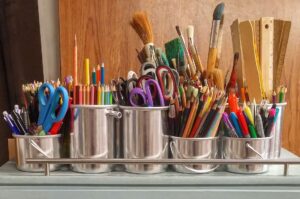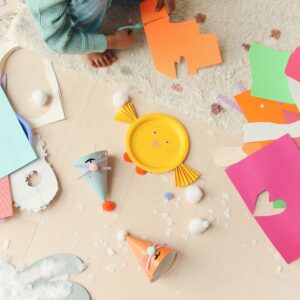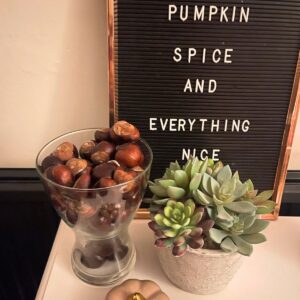
Almost everyone has at least a few keepsakes stashed away somewhere. The ironic thing is that these emotionally resonant objects are often kept hidden away and unappreciated for years, if not forever. Keeping these treasures hidden away and forgotten ultimately defeats their purpose, so it can be a good idea to go through them regularly and turn some of them into unique art pieces.
Turning trinkets and other ephemera into artwork does a few other things. For one, it allows you to seriously consider which memories you want to relive and motivate you. It also helps you get rid of the stuff that no longer matters, freeing up space for other things you might enjoy.
With a bit of imagination, the ideas below can help turn your most cherished tchotchkes into a visible part of your day-to-day life.

Sort Your Trinkets
Before diving into this DIY project, go through your collections and consider whether they still mean anything to you. If they don’t, you might as well sell or dispose of them properly. If something in the pile evokes negative feelings, you probably shouldn’t use them in your art either.
Choose the Right Base for Your Wall Art
The great thing about mixed-media projects is that you can choose any base you want. The one consideration is that it should be structurally robust enough to handle what you plan to display on it. A bus ticket collection, for example, will probably need a less solid base; meanwhile, skateboard wall art will require a firmer foundation. To make a board more interesting, you can overlay suitable illustration art posters on them then layer your memorabilia on top of it.
Plan Your Artwork’s Theme
A lot of people may skip this stage but intentionality counts for a lot when creating art, especially when it’s built from found objects. The colours, composition, and layouts on your final piece should more or less follow a central theme you’ve decided on.
Create a Storyboard
Once you’ve figured out a theme, do a test arrangement of your chosen items to see if you can use them to tell a coherent story. From here, you can decide whether the objects can stay as they are or if they might need some kind of alteration to fit your vision. Taking this step increases the intentionality of your art and prevents you from having to unglue pieces from your baseboard and unintentionally ruin some items.
Mix and Match Textures
Once you have your concept and layout figured out, try combining different textures to give your final piece a touch of visual dynamics. Combining shiny and rough objects in your artwork can create an interesting interplay of light and shadows, making it seem more than a typical mixed-media piece. You can also consider three-dimensional arrangements by layering and stacking items to create depth and visual intrigue.
Read Up On Mixed Media Techniques
Art projects involving trinkets are essentially mixed media, and it makes sense to look up what other artists have done before. If you like a particular approach, you may want to research how it’s done so you don’t end up making common mistakes that ruin the longevity of your envisioned piece.
Use Quality Adhesives
Even career artists sometimes hesitate using expensive archival adhesives, but these are critical for a few reasons. First off, if your memorabilia is valuable to you, you probably don’t want your glue to corrode them. Second, better glue simply does a better job of keeping pieces attached to baseboards. If you want the resulting artwork to last, just spring the cash for quality tapes, glues, and other adhesives.
Preserve Fragile Items
If your memorabilia is delicate or prone to fading, consider taking steps to keep them in good condition. Photos and other similar flat objects can be placed in archival-grade protective sleeves to keep them safe from corrosive dust and UV radiation. Meanwhile, three-dimensional objects can be sealed with a clear varnish or encapsulated in resin. If you’re fine altering the state of a trinket, you can also repaint it to both preserve it and make it work better within the final piece.
Embrace Imperfections
Though you want to take reasonable steps to preserve your work, it doesn’t always make sense to restore already-deteriorated trinkets to pristine condition. In fact, leaving things as-is can even add character and authenticity to your artwork. Just make sure that your items can reasonably stand up to being hung on a wall.
Experiment with Framing
Classic black or white frames are probably the safest choices for turning collectibles into artworks, but you should also explore unconventional framing options. Look up vintage frames, shadow boxes, and other non-standard options to see if they’ll better suit your pieces. Regardless of your frame choice, though, consider investing in UV-protective acrylic panels to keep your work from fading.
Transforming memorabilia into art is not just about artistry—it’s about curating memories and expressing our individual journeys. When we choose to display our personal treasures in our intimate spaces, it’s a conscious decision to remind ourselves of specific places, events, and people. What we choose, in turn, influences what we become. Your memories have the power to make your life both purposeful and beautiful, so dig up your keepsakes and transform your home into something extraordinary.


















Leave a Reply